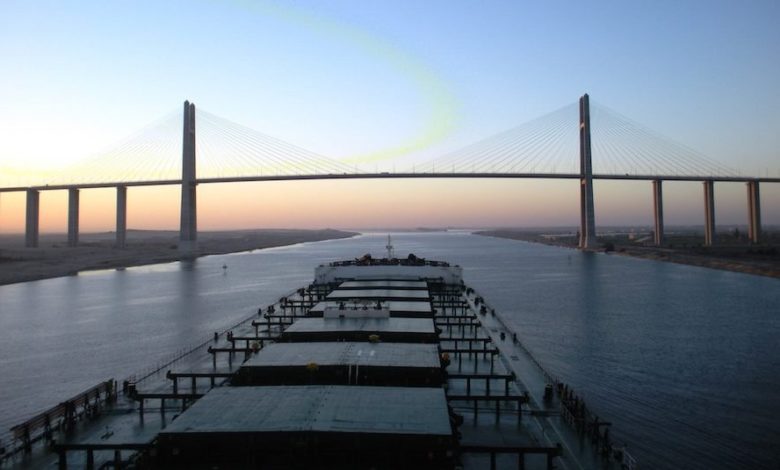Suez alert: the terrorist threat to shipping

Kevin Doherty from Nexus Consulting warns authorities in Egypt are covering up a severe terrorist threat to shipping.
The UN just removed the Gulf of Suez from the High Risk Area (HRA) list, but that decision may have been too hasty. A week after removing the Gulf of Suez terrorists attacked an Egyptian naval vessel two miles off the coast of the Sinai Peninsula. Despite this maritime terrorism attack and increased strife across Egypt, the current ISPS security level for Egypt remains at ‘Level 1 – normal’. Egypt’s inability to be transparent about the real risks and incidents means commercial shipping cannot conduct a valid risk assessment for the waters in and around Egypt.
There is always an increased and inherent risk when commercial ships transit close to conflict zones. In the past two decades, a number of commercial ships have received damages or even sank from collateral damages during transits through conflict zones.
In the ‘80s the Alaska II sank in the Red Sea after striking a mine and in the Persian Gulf, an Iranian rocket hit the M Sea Isle City. In the ‘90s, off the coast of Eritrea, terrorist rockets sank the Polish flagged Boleslaw Krzyzwusty.
In 2014, the German cruiseship AIDAdiva had debris rain on her upper deck from a Hamas rocket that exploded above the ship, in the same vicinity of the recent Egypt attack. In 2015, jet fighters in Libyan ports attacked multiple commercial ships; while in Tunisia, a terrorist killed 22 cruiseship passengers during shore leave.
Collateral damages are not the only risk to commercial shipping in conflict areas. Terrorists have targeted a number of commercial ships in recent years as well. Off Yemen in 2002, an al-Qaeda bomb set the Limburg ablaze, just two years after the USS Cole attack; in 2010 the M. Star was hit with a waterborne explosive in the Straits of Hormuz; and in 2013, the Cosco Asia was impacted with two rockets in the Suez Canal.
Commercial shipping is not immune to the perils of a conflict zone. Protecting the operation relies on the CSO’s ability to properly identify, assess and mitigate any and every potential risks to the operation.
The validity of a proper and effective risk mitigation strategy relies solely on obtaining accurate information about the potential risks. The adage ‘garbage in, garbage out’ (GIGO) is widely used in the programing and intelligence worlds to describe that when starting with inaccurate information the results can only yield a bad program or assessment.
For commercial shipping, ‘garbage in’ or inaccurate information about a risk renders any risk mitigation strategy based on that inaccurate information invalid. When ports that should be operating at ISPS Security Level 2 or 3 are not, CSOs are unable to do the needed to ensure a safe and secure operation.
For the CSO tasked with ensuring a safe and secure operation, it is crucial to dig deeper when presented with conflicting or questionable information regarding risk, as somewhere between the fear-mongering private security firm seeking to rebrand a Somali pirate deterrent and the bright-sunny day that the Egyptian government heralds lies the real risks in and around Egyptian waters.
